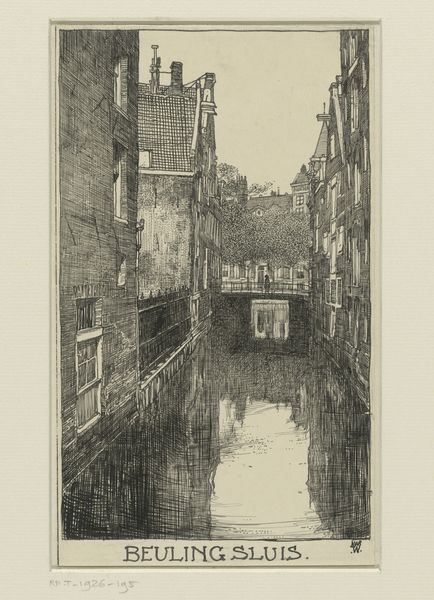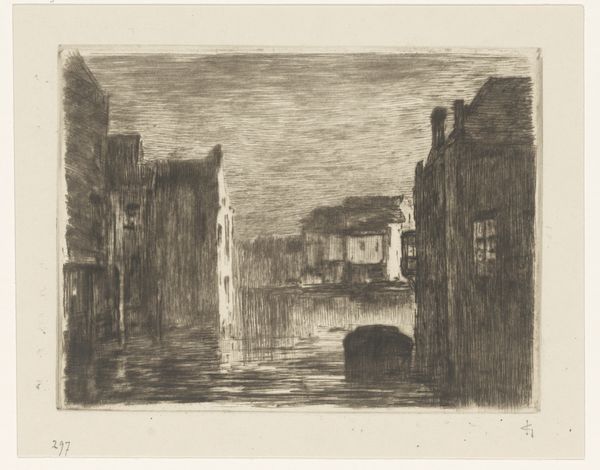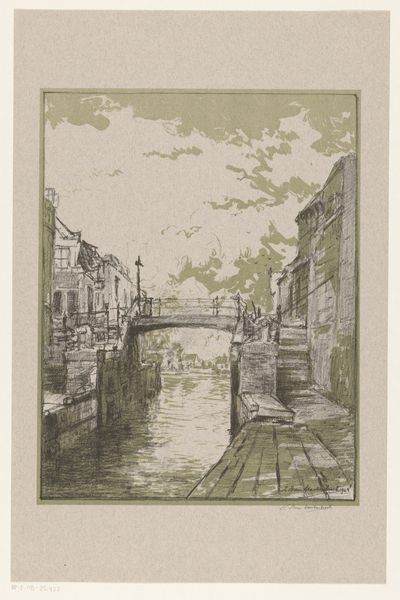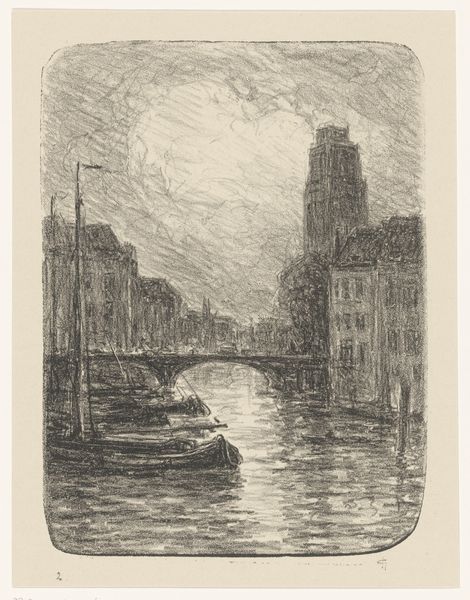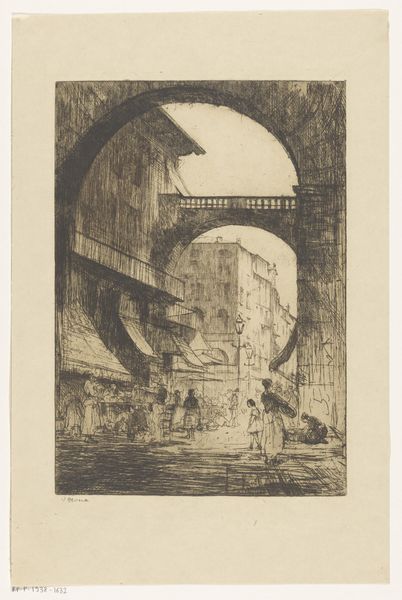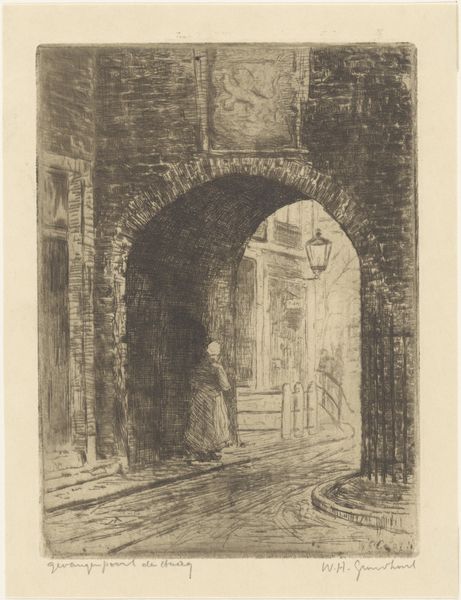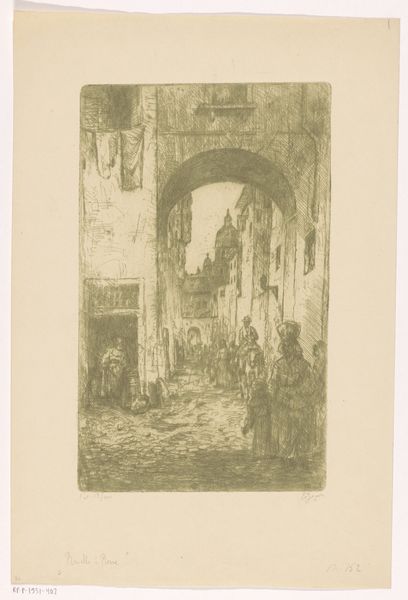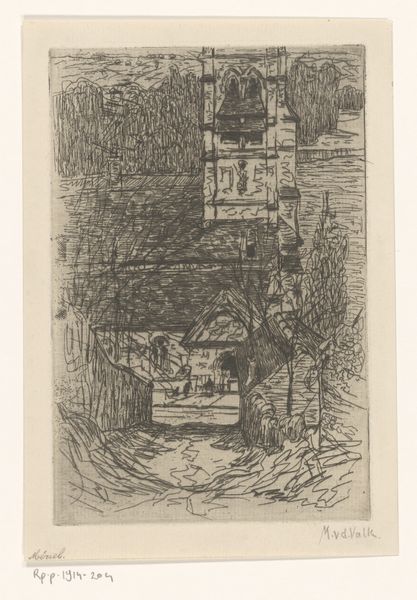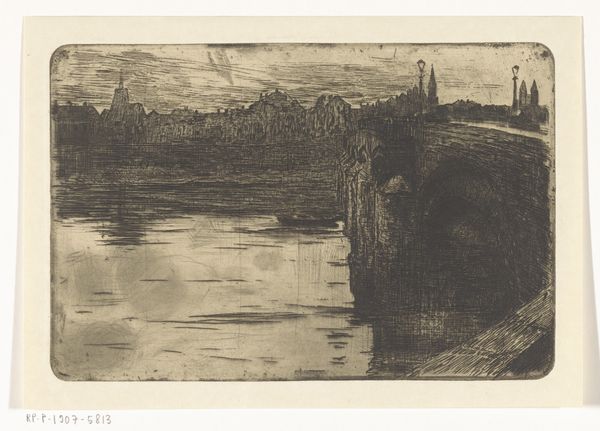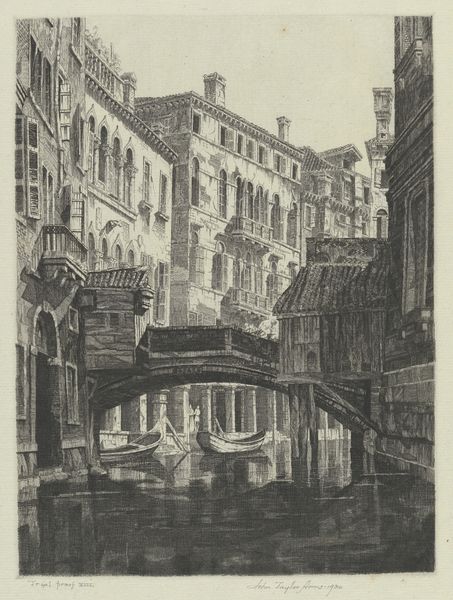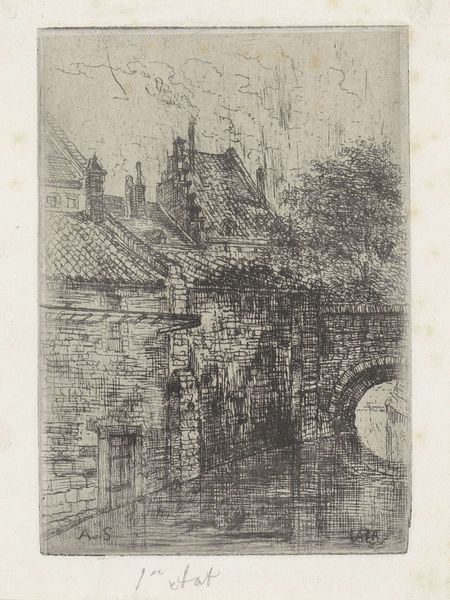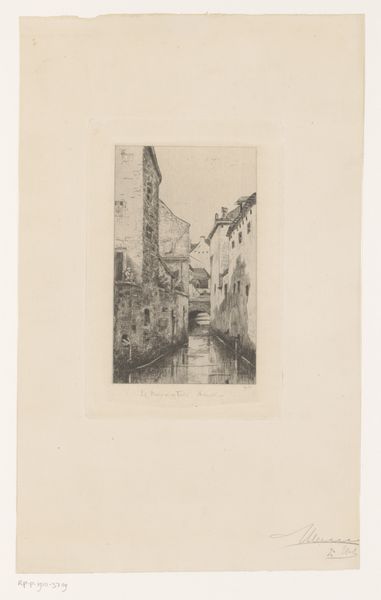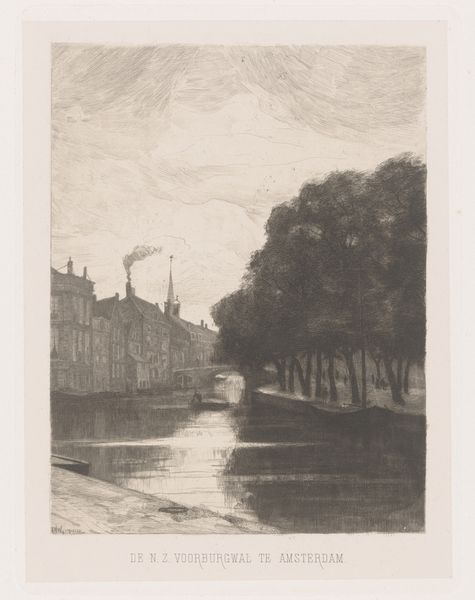
print, etching
# print
#
etching
#
landscape
#
cityscape
Dimensions: height 194 mm, width 136 mm, height 219 mm, width 162 mm
Copyright: Rijks Museum: Open Domain
Curator: This print by Etienne Bosch, likely completed before 1931, offers a glimpse into the waterways of Venice. The work is titled “Mistig weer te Venetië,” which translates to “Misty Weather in Venice.” Editor: My first thought is that it’s melancholic. The light is muted, and everything seems softened, as though the city is holding its breath. It's not the postcard Venice we usually see, full of light and color. Curator: Precisely. Bosch captures a quieter, more intimate Venice. We are presented with an etching technique that uses fine lines to create tonal variations, emphasizing the misty atmosphere alluded to in the title. You can almost feel the humidity in the air. Editor: Thinking about the timing, pre-1931, I wonder what stories this place held, you know? What about the lives of women working class navigating these misty canals. Or, did it have more mundane uses that reflect something essential about the class struggles in these parts. This image opens to thoughts on class, gender, labor. Curator: A city is only a reflection of the people it holds within itself, or sometimes what its leaders make of it, of course. But I like to believe Bosch captures the in-between moments. It could be after or before some grand happening—this moment invites an interpretation on life and time. I see that sentiment reflected here through a certain kind of dreaminess—in what is suggested rather than stated directly. Editor: Dreams are definitely there but dreams often reflect or even mirror things that haunt, in Venice that certainly involved some deep class schisms and historical exclusions. The question then, for me, is what historical context do these images tap into? How do we contend with a complicated past without romanticizing an urban fairytale of it all? Curator: Fair points. These questions you pose provide an openness to the viewer’s projection of the self into the artwork. You have helped invite viewers into critical thinking, encouraging us to delve into deeper cultural and historical currents. Thank you. Editor: Thank you. Bringing historical complexity to images often makes these so much richer, or heavier if the complexity is, itself, quite tragic. These pieces open us up, one by one, I hope.
Comments
No comments
Be the first to comment and join the conversation on the ultimate creative platform.
